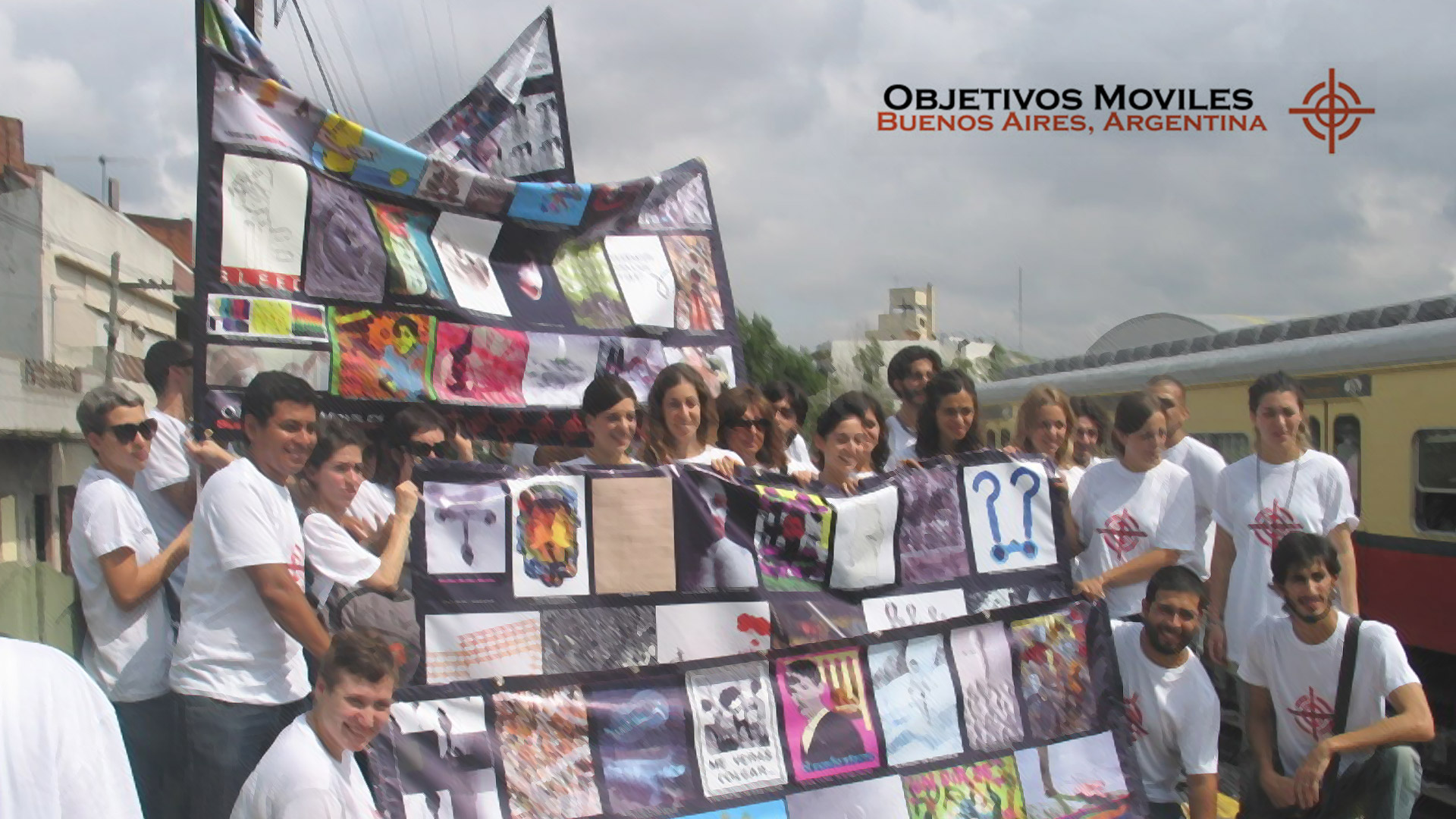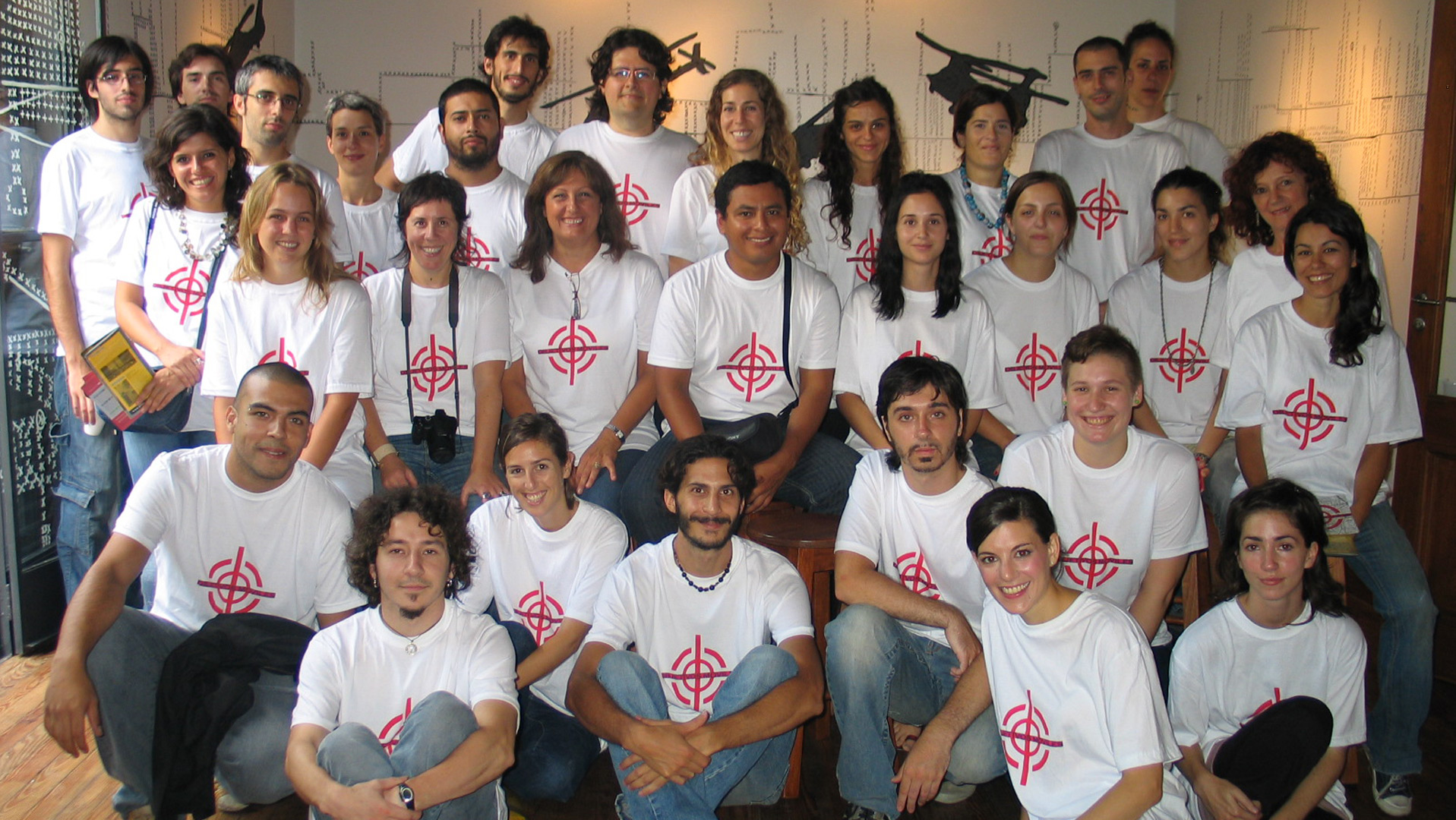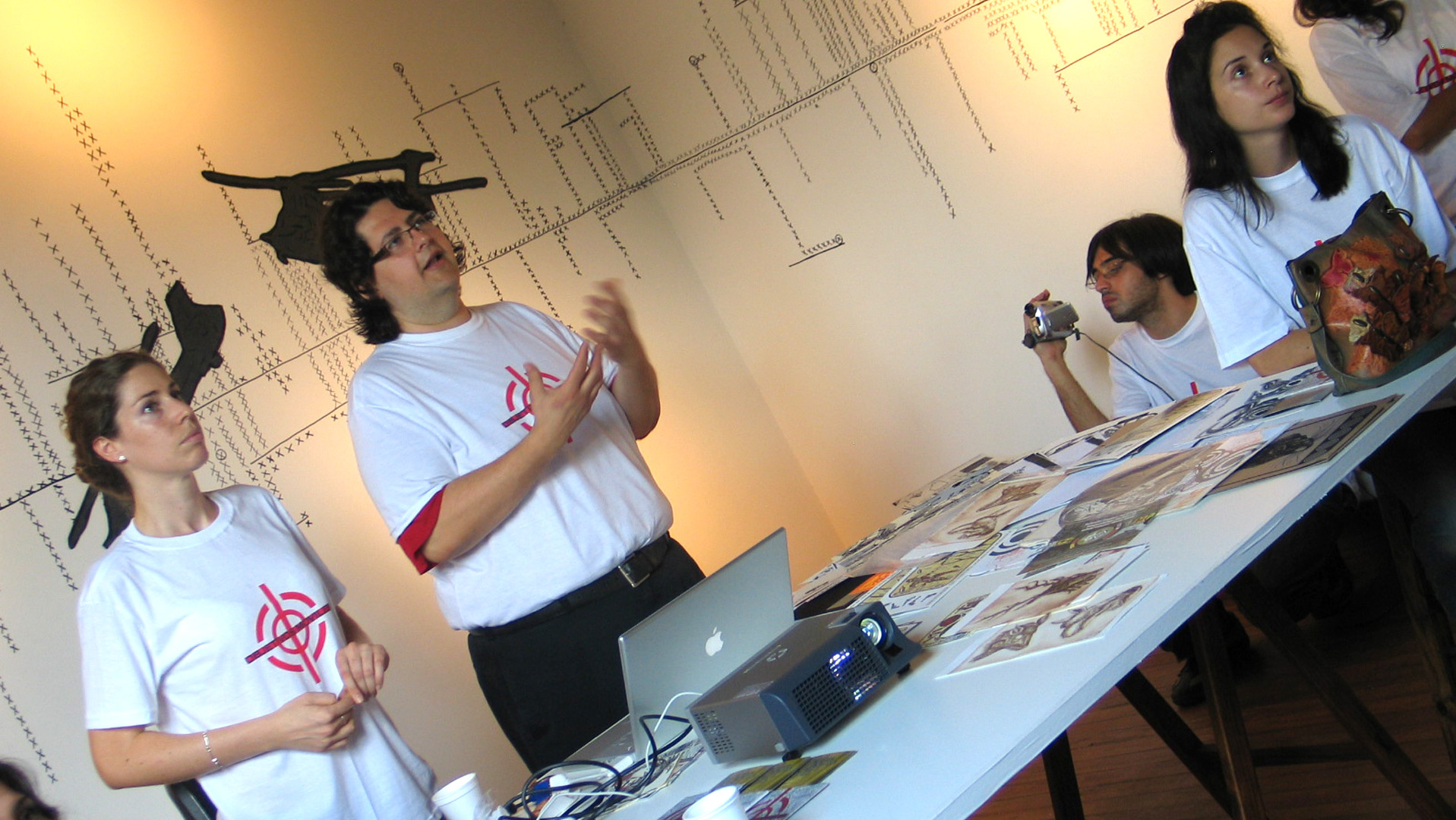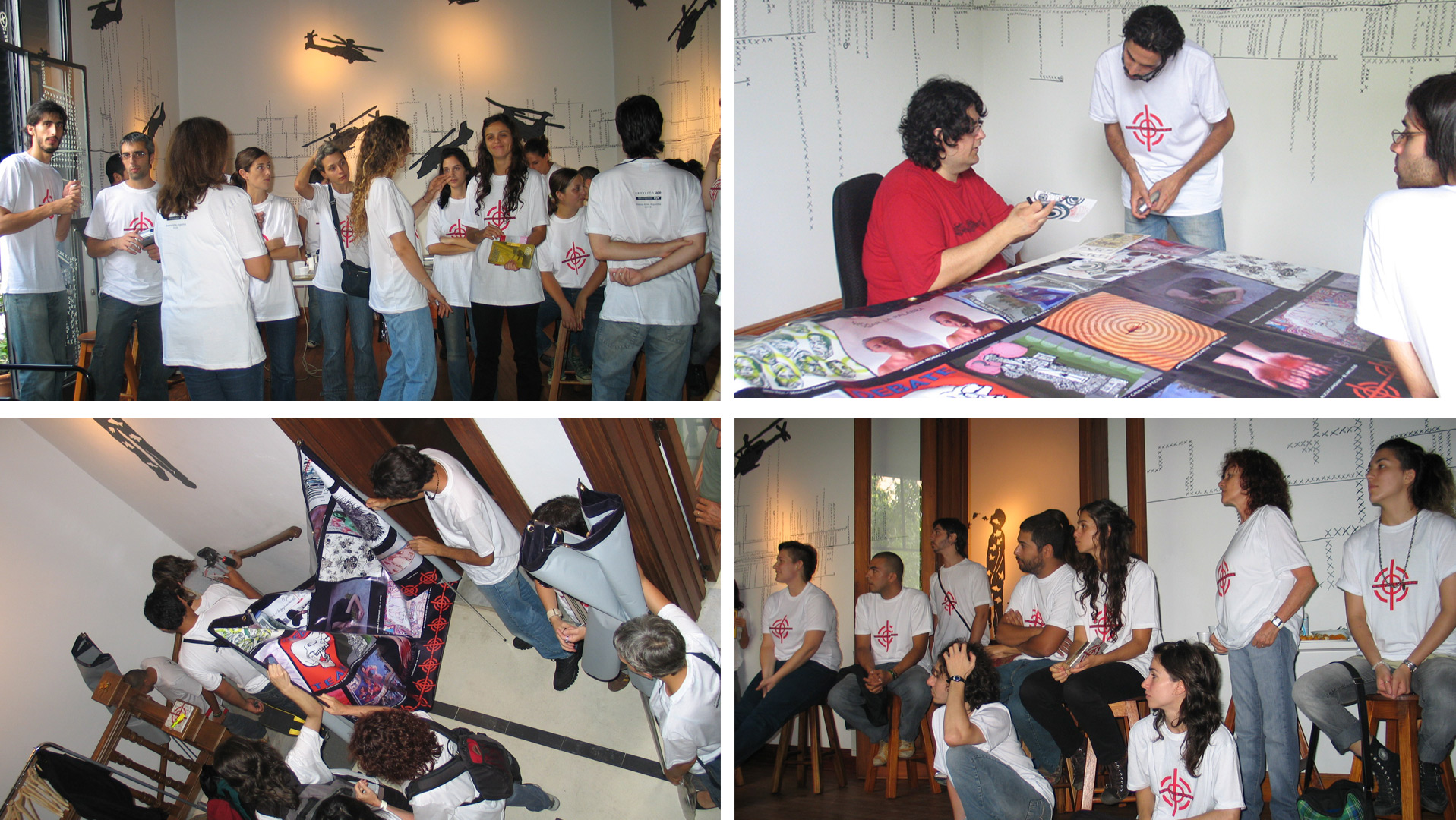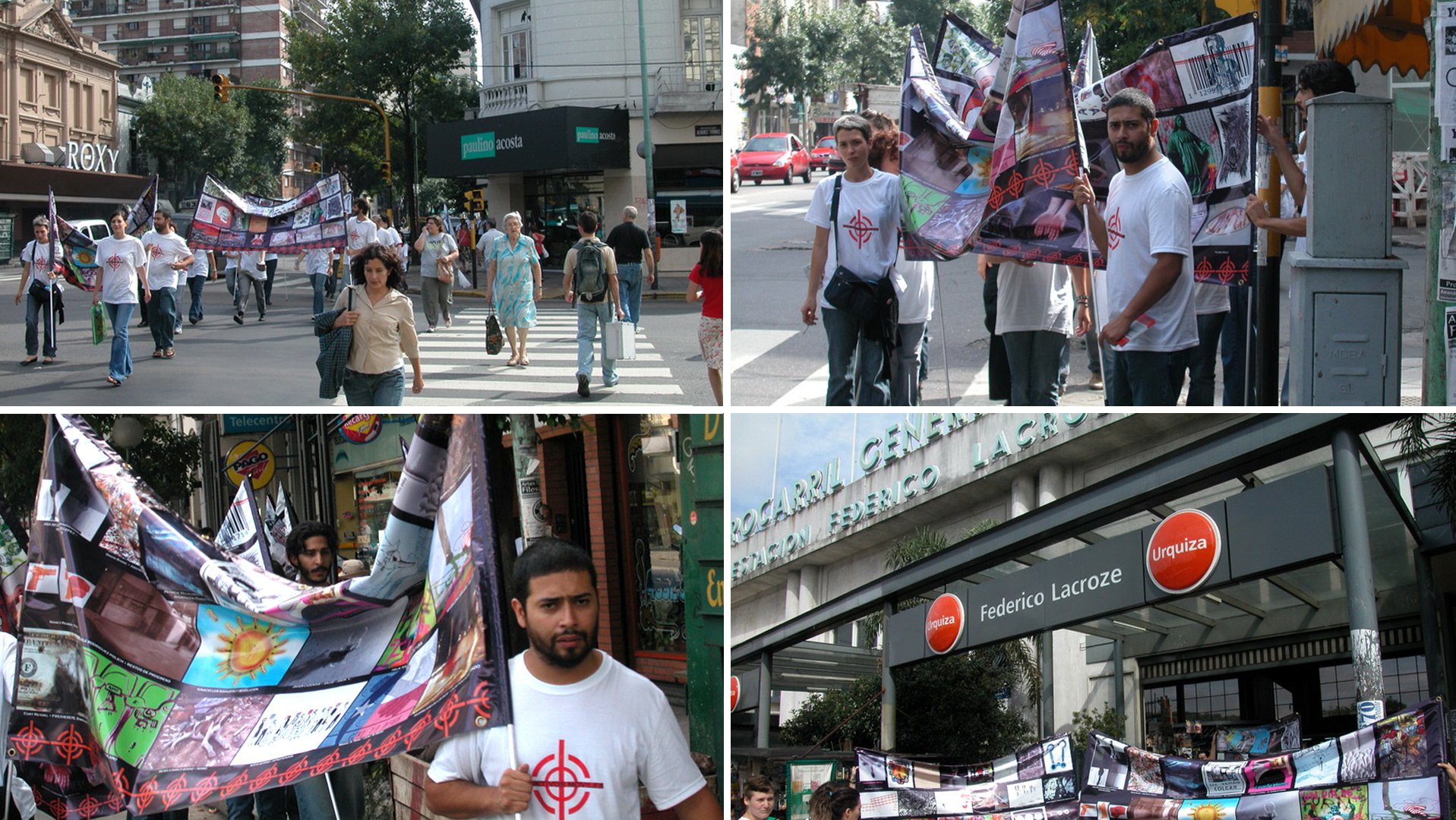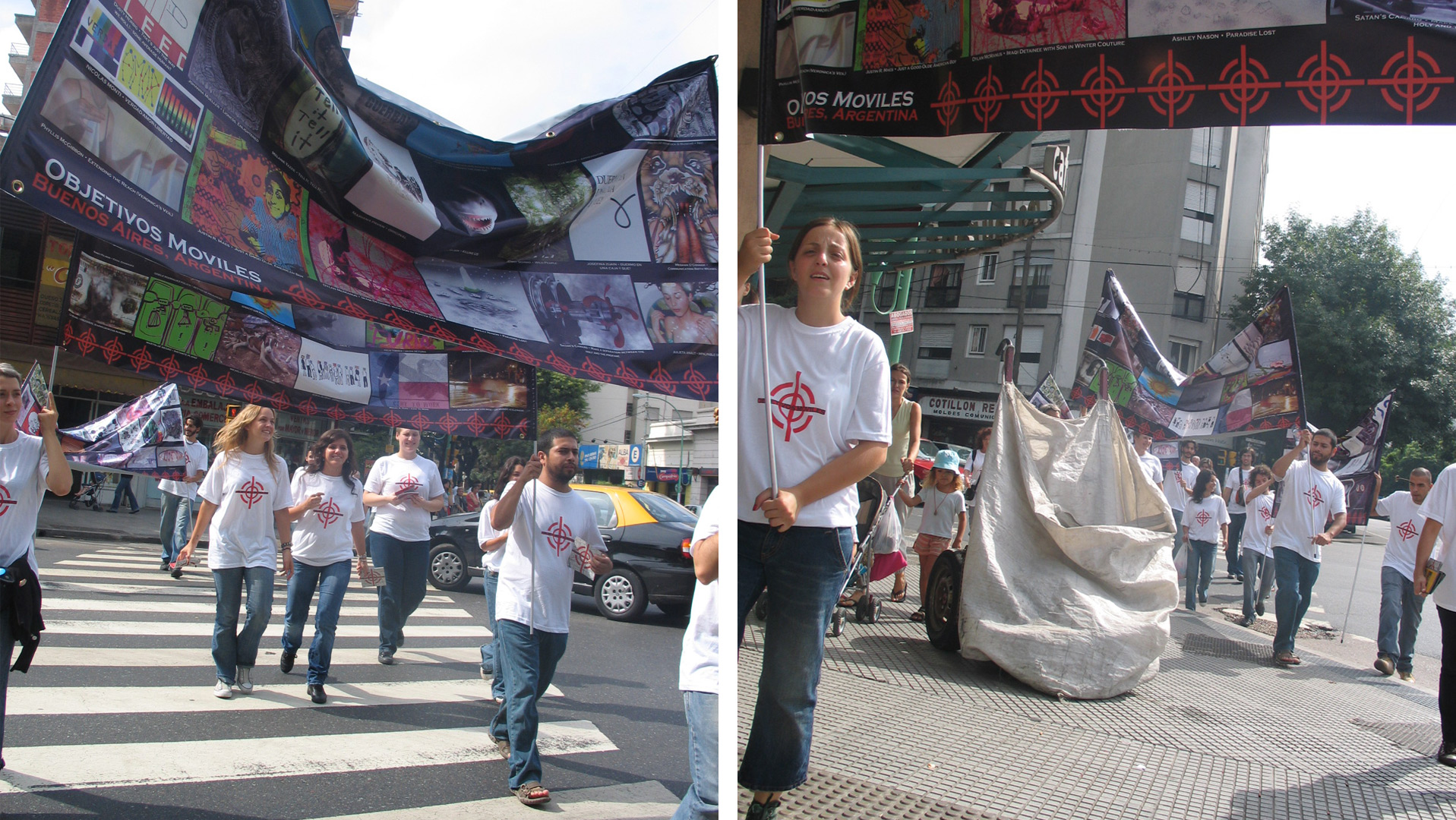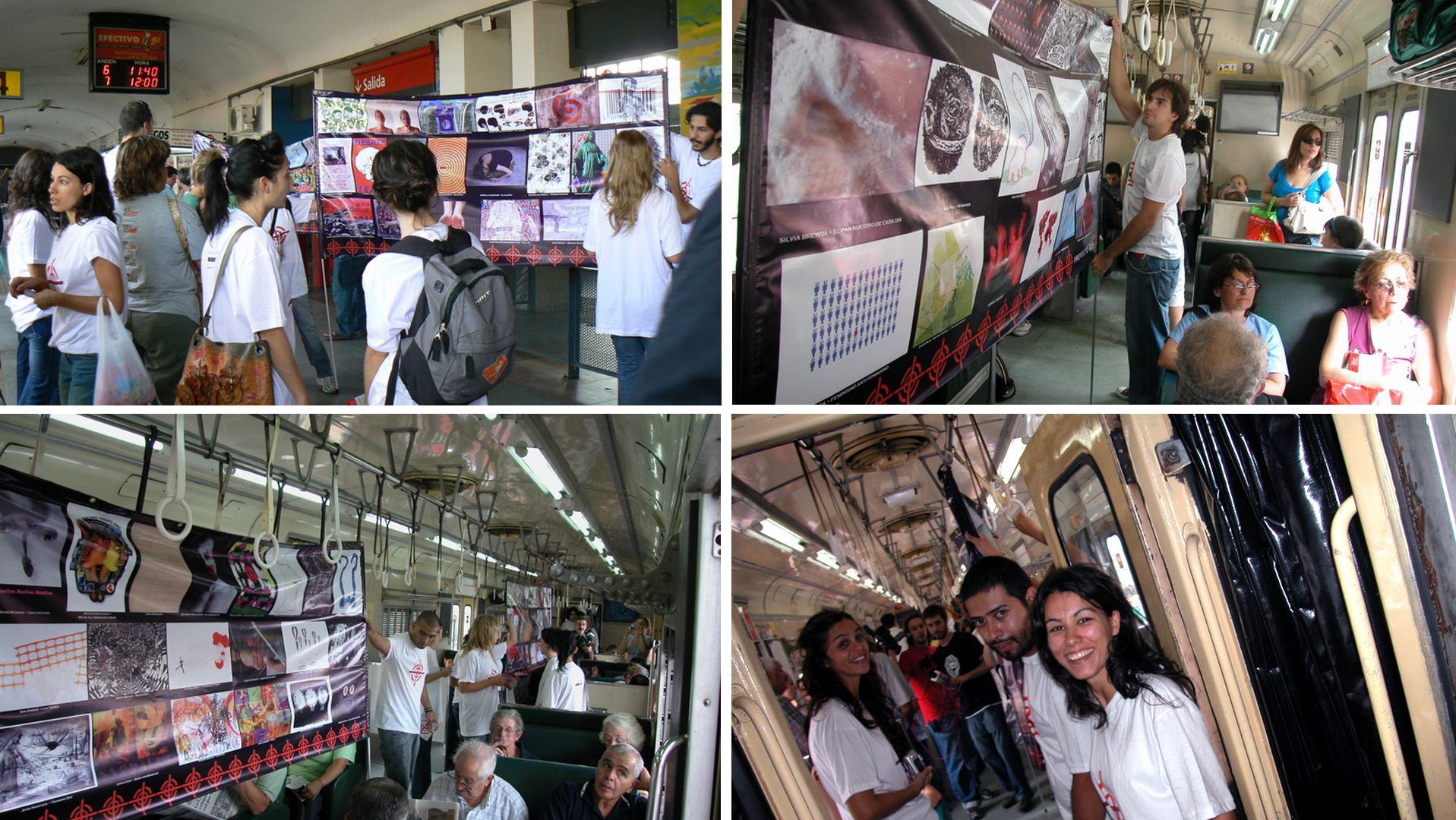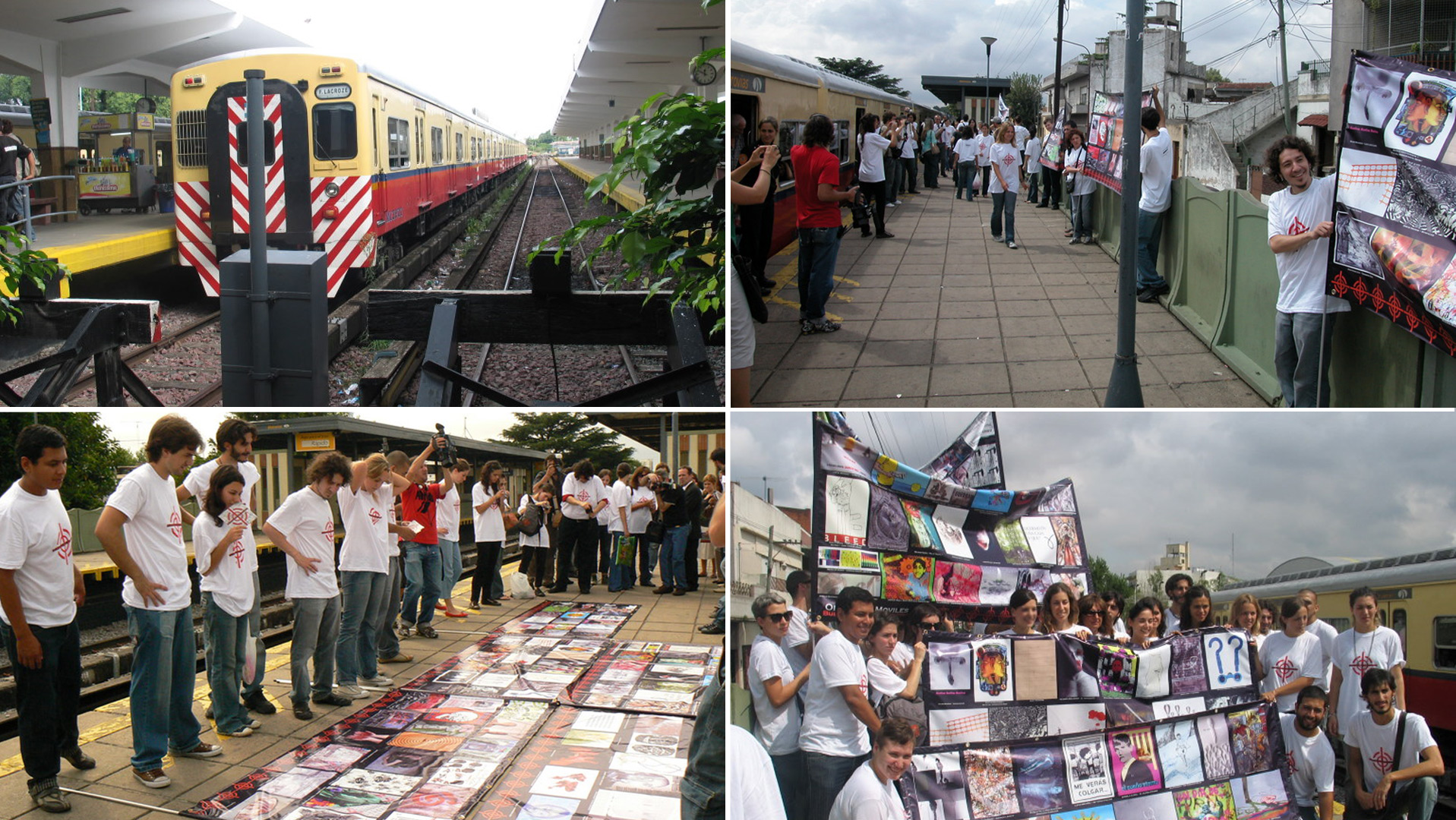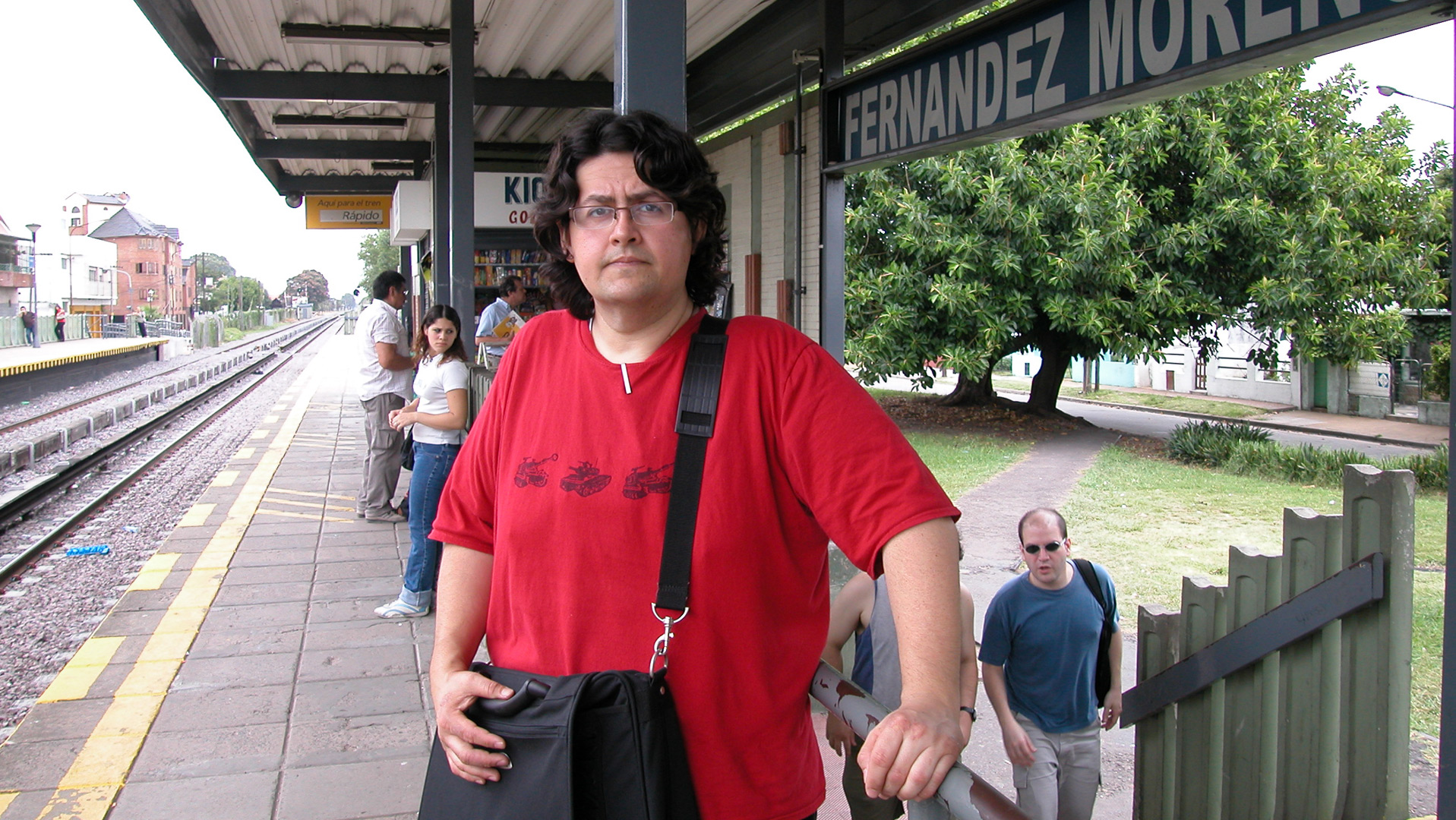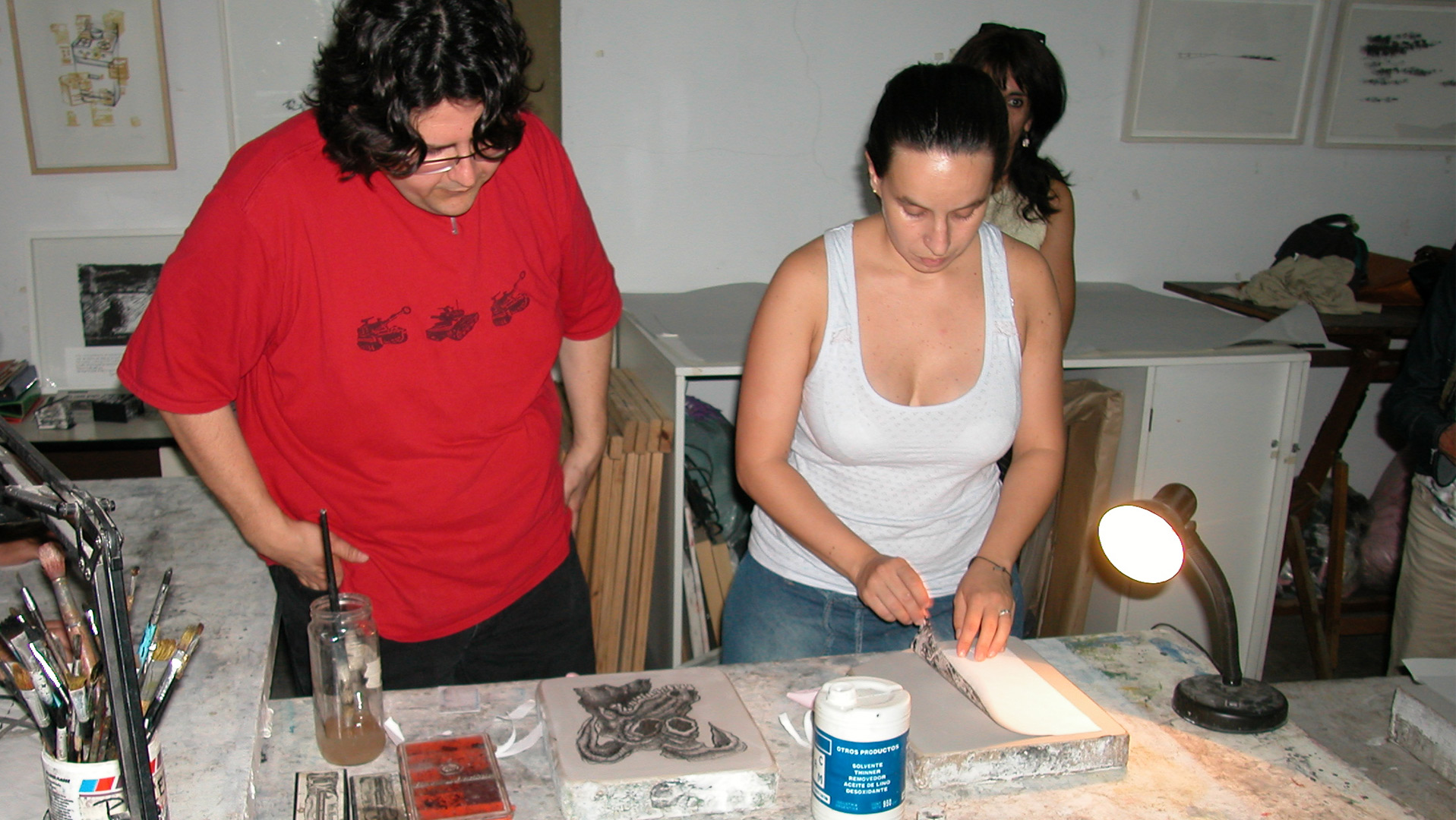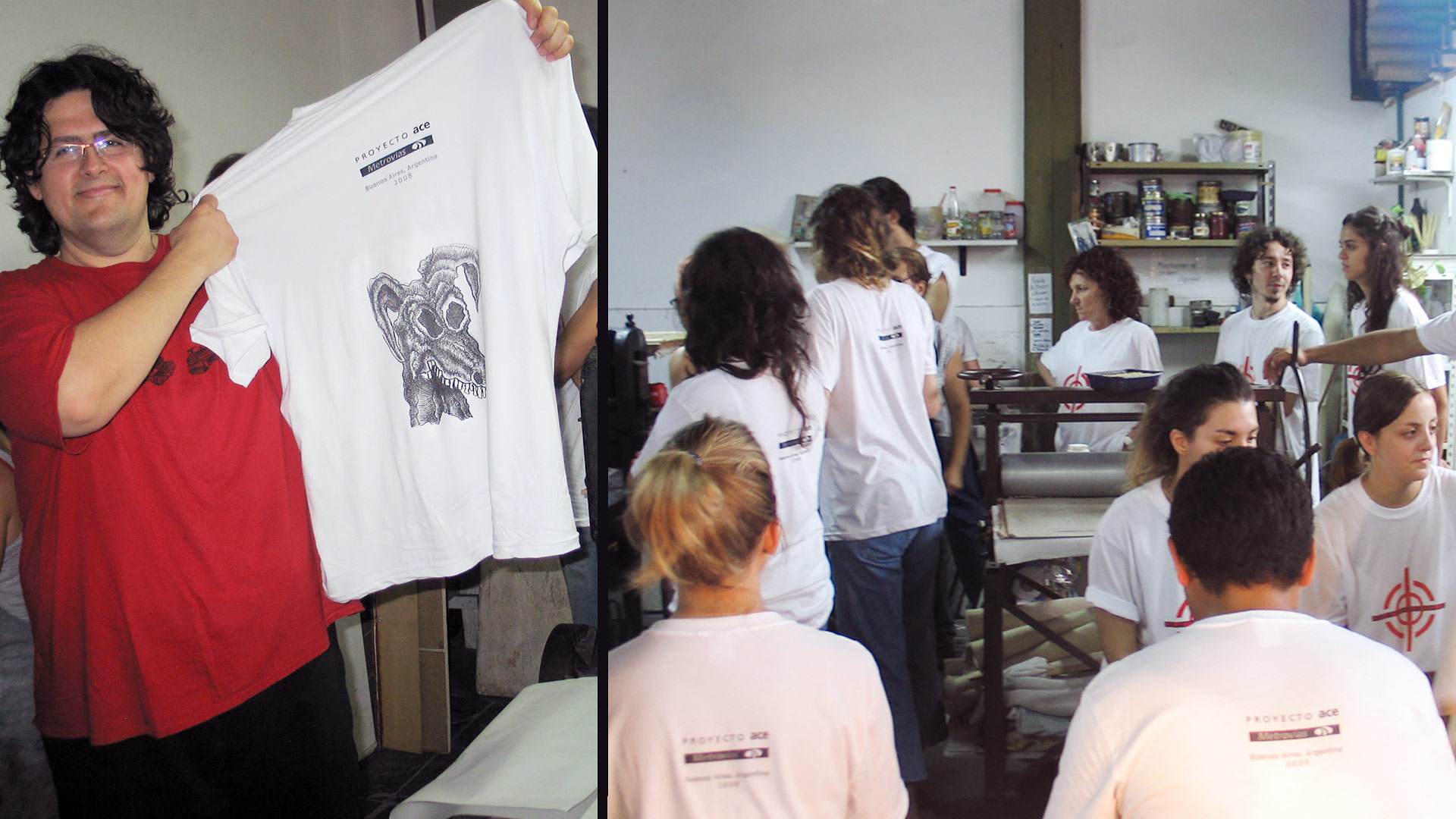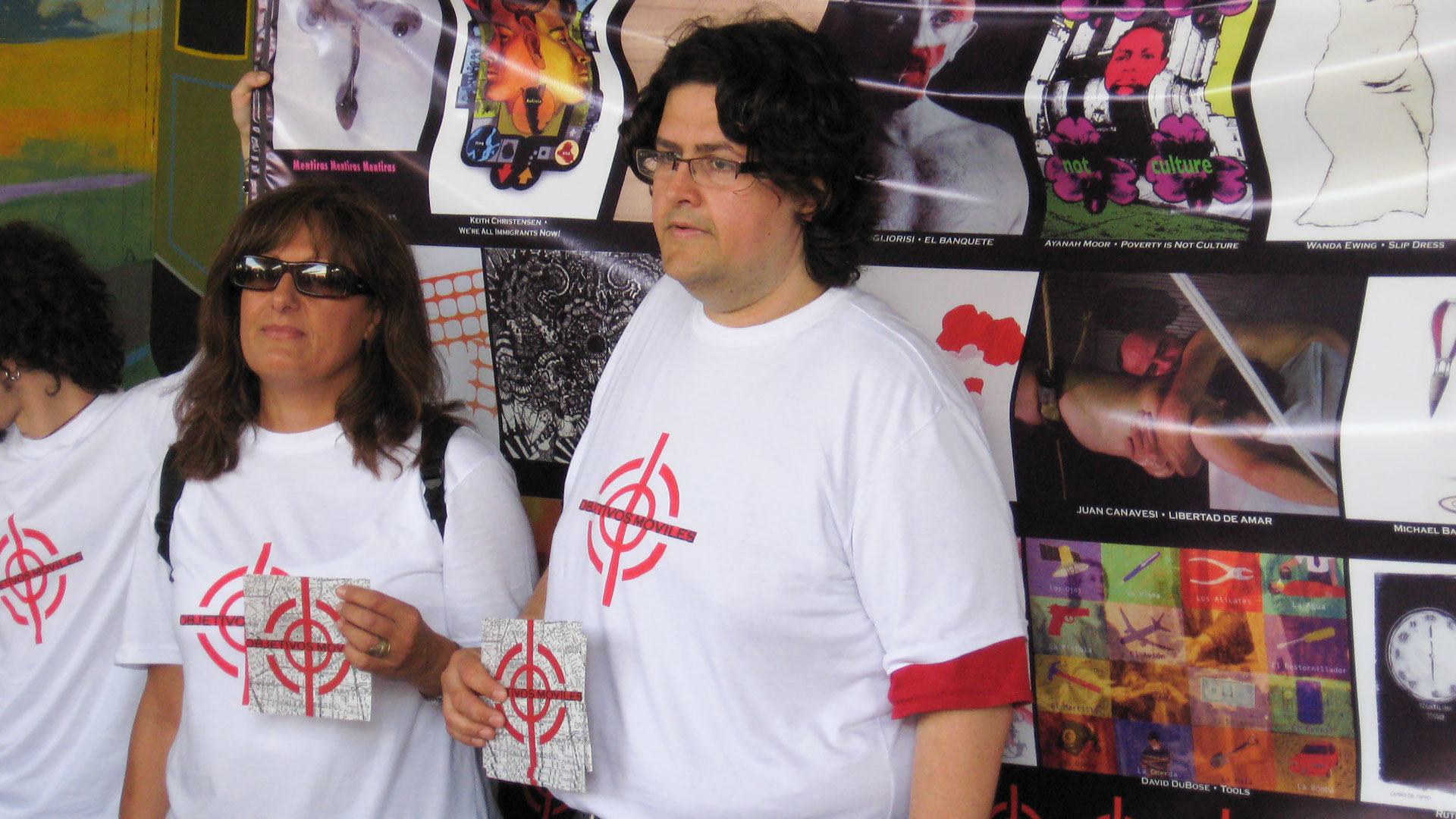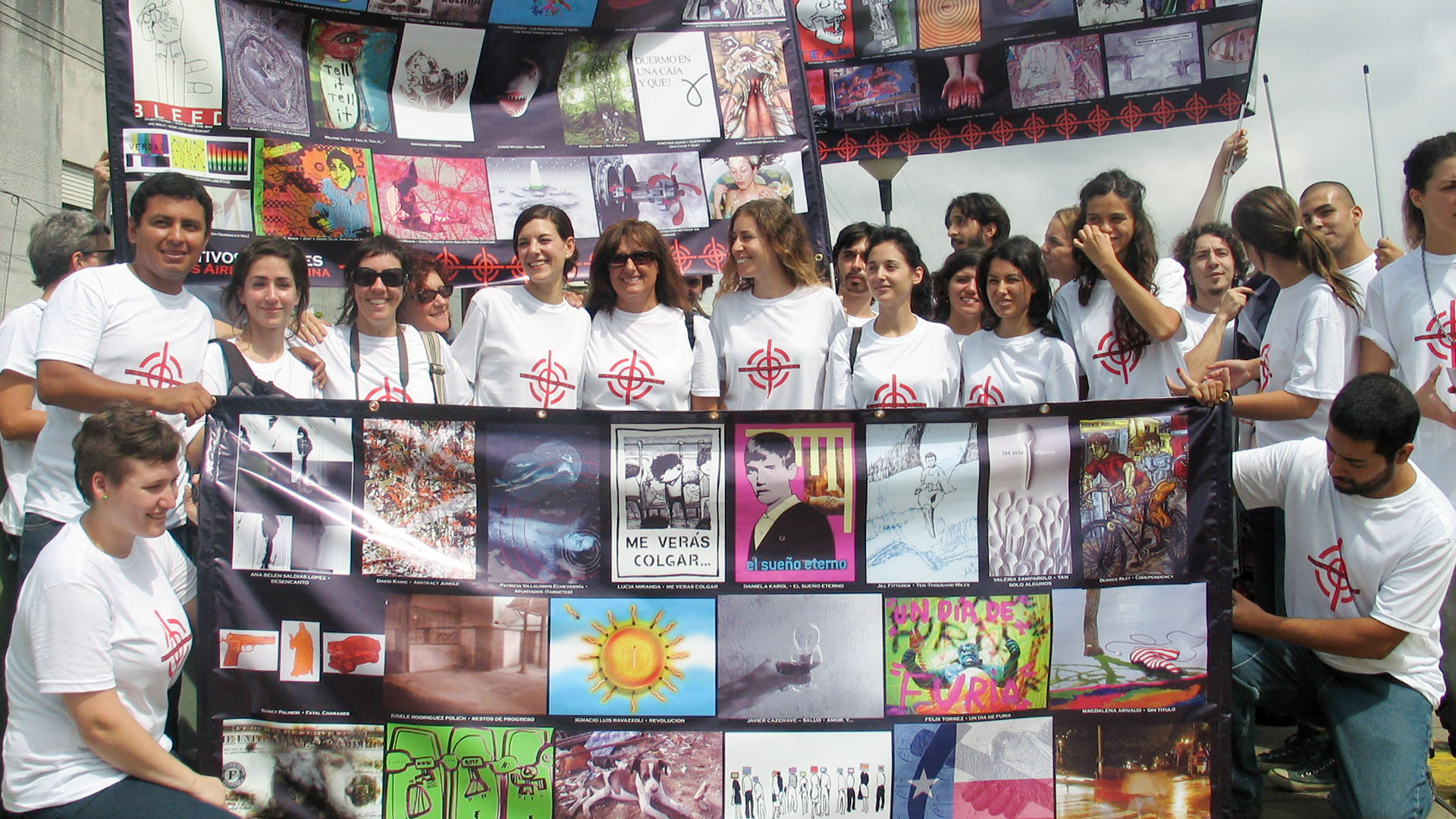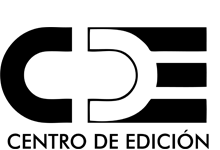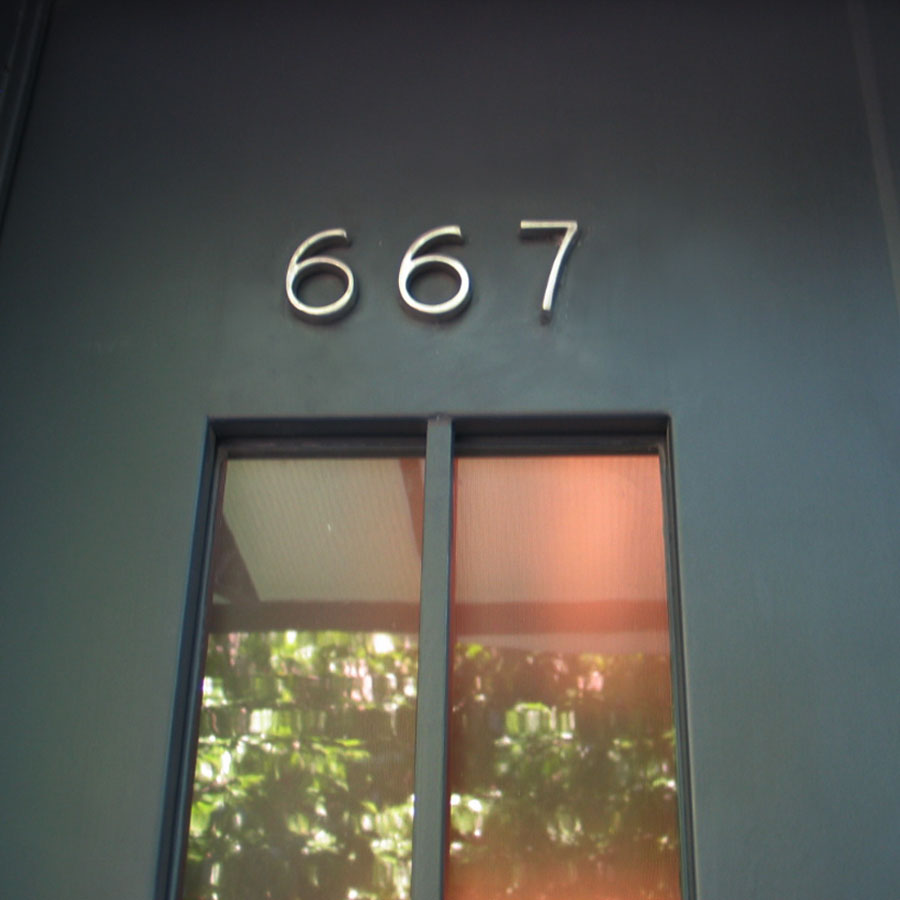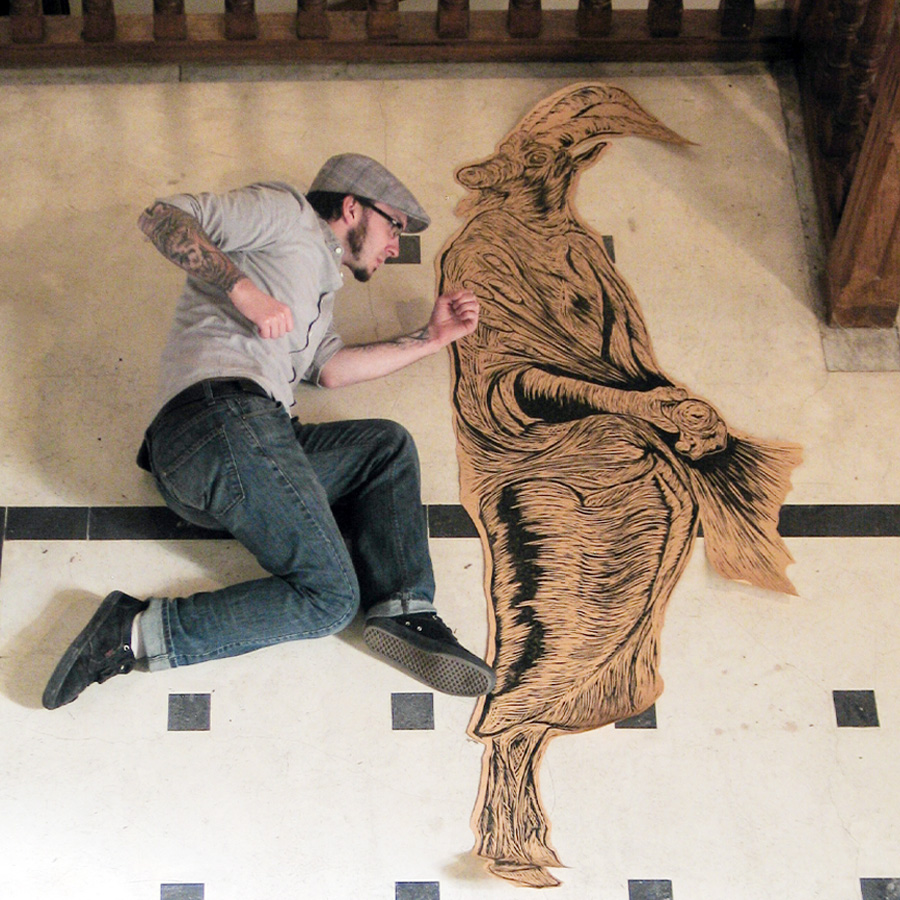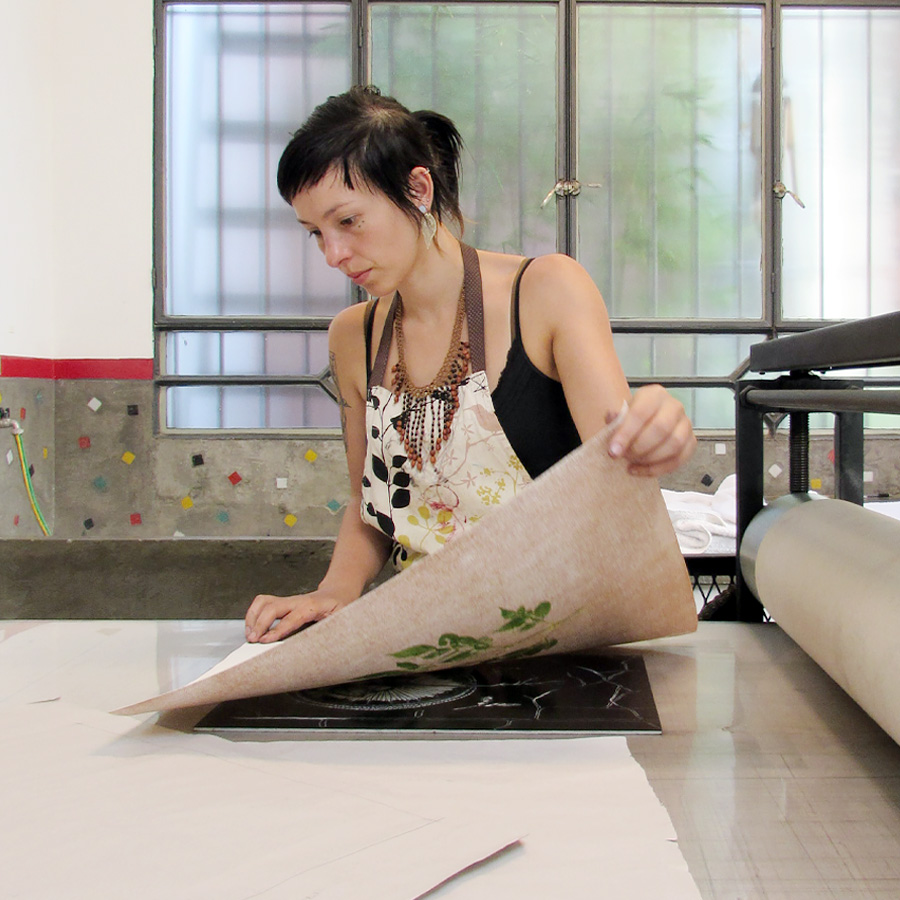Artists
United States of America
Wanda Ewing
The Jump-off
16.05.11 03.06.11
Wanda Ewing’s project attempts to explore the power struggle in Hip-Hop culture. This project adds to the conversation: is the Hip-Hop industry misogynistic towards women or are the women involved in the industry actually empowered.
ARTIST STATEMENT
The artworks I create explore the subjects of race, beauty standards, sexuality and identity. Inspired by images found in popular culture, I often use humorous narratives as a device for engaging the viewer.
My most recent work is focused on feminine beauty. It began when I created a group of paintings depicting large, black pinup girls. I titled the series Black As Pitch, Hot As Hell. This work was just the beginning of an exploration into how we as a society define feminine beauty and how race factors in to this evaluation and conclusion where they have been made, whether spoken or implied.
The Black As Pitch series has lead me to continue utilizing the pinup imagery originally based in misogyny and sexism in order to create images that are empowering and thought provoking. My work is heavily influenced by the Pop Art movement, the look of Outsider Art, fashion and commerce.
BIO
Wanda Ewing
1970 – 2013
Omaha, Nebraska, USA.
STUDIES
2002 | Master of Arts, Specialization in Engraving, University of Iowa, USA.
1997 | Bachelor of Fine Arts with a concentration in Engraving, San Francisco Art Institute, USA.
EXHIBITIONS
Fair Folks & A Goat, New York. USA.
University of West England, Bristol, UK.
The Richard M. Ross Museum, Delaware, Ohio, USA.
Kathleen Cullen Fine Arts, New York, USA.
Sheldon Memorial Art Gallery, Lincoln, Nebraska, USA.
Leedy Voulkos Art Center, Kansas City, USA.
GROUP EXHIBITIONS
Museum of Nebraska Art, Kearney, Nebraska, USA.
Jingdezhen Sanbao Ceramic Art Institute, Jingdezhen, China
The Park School of Baltimore, Baltimore USA.
Highpoint Center for Printmaking, Minneapolis, USA.
International Print Center, New York, USA.
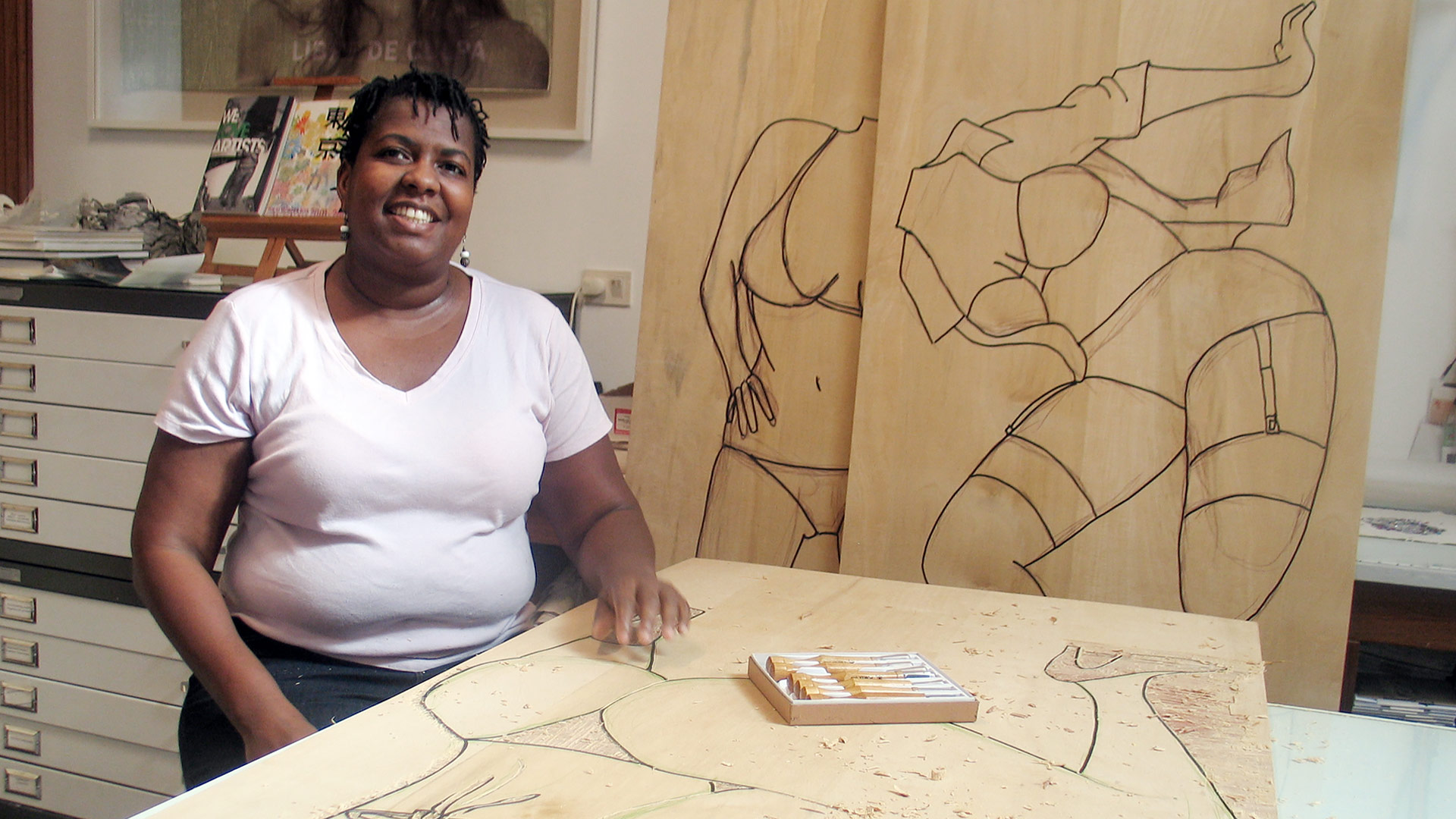

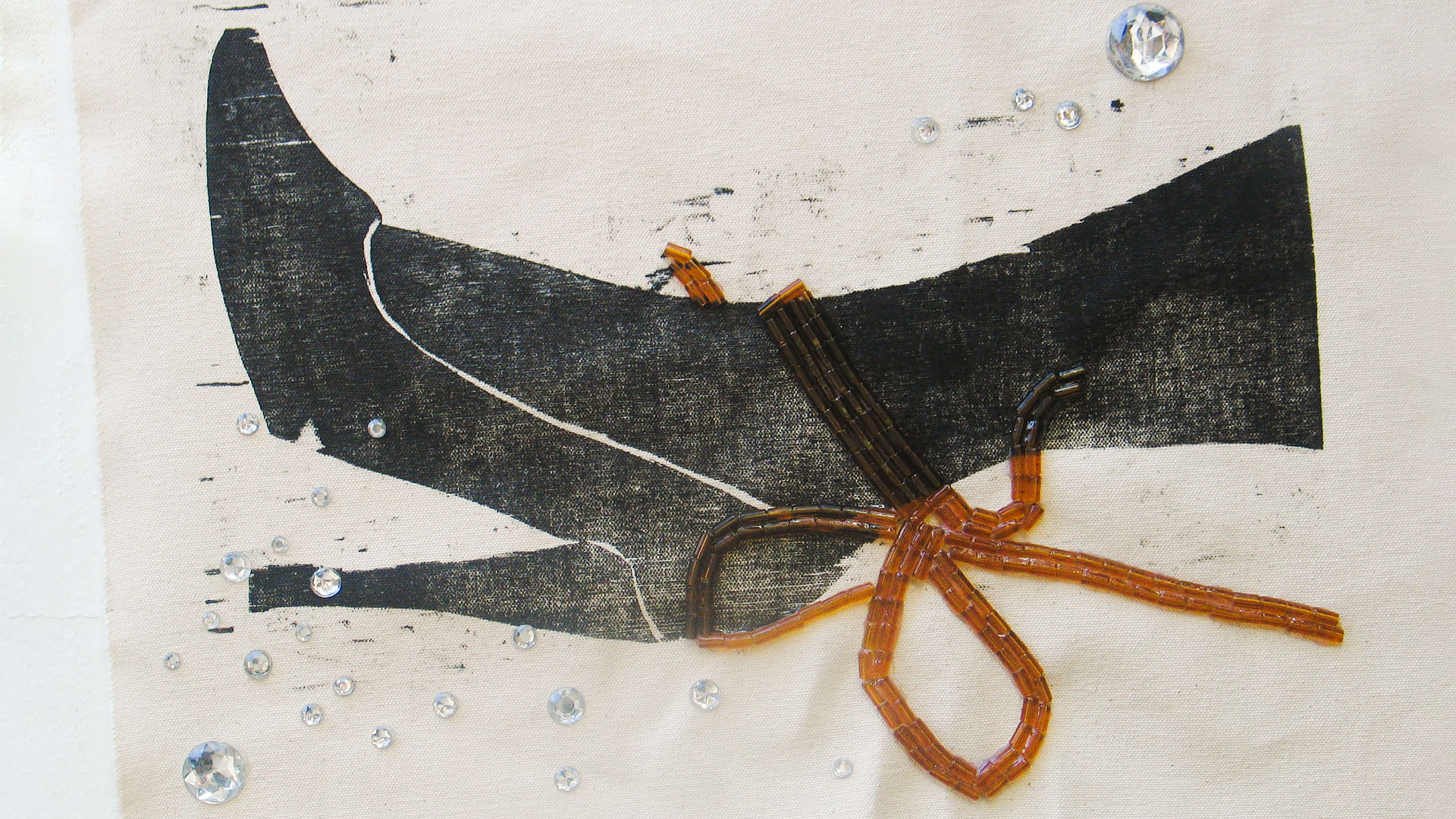
Related Activities
Exhibitions
Jump Off
Wanda Ewing
01.06.11 17.06.11
WANDA EWING (by Alicia Candiani)
The University of Iowa, in the United States, is well known for its internationally renowned printmaking program (established by the Argentine Mauricio Lasansky) and for being the nest that incubated Ana Mendieta;s performances and projects. It was at this university where the artist Wanda Ewing earned her MFA. I do not mention this casually because as their creative process, technique and focus on gender come together in a combination that is enjoyed twice if you know what was the context in which they began to originate and what bounds has this context with contemporary art. Thus, this creative artist is allows herself to break all the rules and to use unconventional, shinny and colorful materials while we perceive that she -as her women representation- is “in control”. Wanda has a refined use of technology, that she manipulates as she wants , to create powerful images that make us think about gender from a different point of view.
ARTIST STATEMENT
The “Jump Off” is slang in hip-hop culture referring to the girl that everyone has sex with. I learned this term after watching the VH-1 documentary “Sexploitation On the Set”. During the program, individuals working in the industry were asked if they thought the women who performed in the videos (known as Video Vixens) were taken advantage of or were the women in control. The responses from both men and women varied. Some thought the women were being used, others did not think so.
Karrine Steffans, the first Video Vixen, wrote a memoir about her experience in the industry. She completely denounces the industry as lude, sexist and misogynistic. She wrote about her sexual escapades and how she got the nickname Superhead due to her promiscuity. That name was shortened to Sue. Where it once felt “endearing”, it quickly turned ugly. She knew that if she stayed in the industry, she would succumb to the sex and drugs and eventually destroy her lifei.
As I watched the documentary, an image came quickly to me of the bodies of beautiful women with punching bags for heads and puppet strings attached around their ankles, feet and neck. The punching bag for me represents the psychological assault these women are being subjected to.
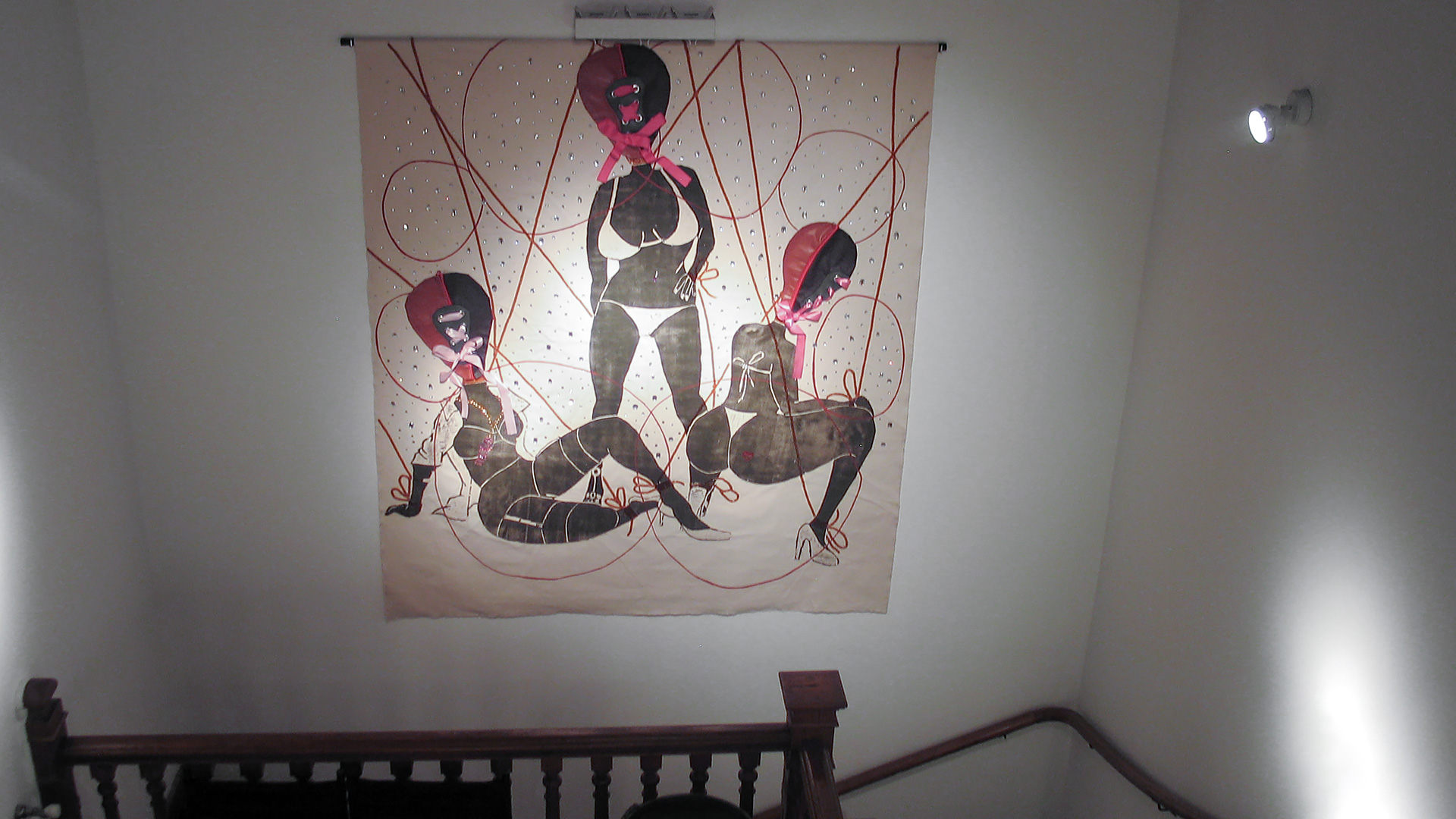
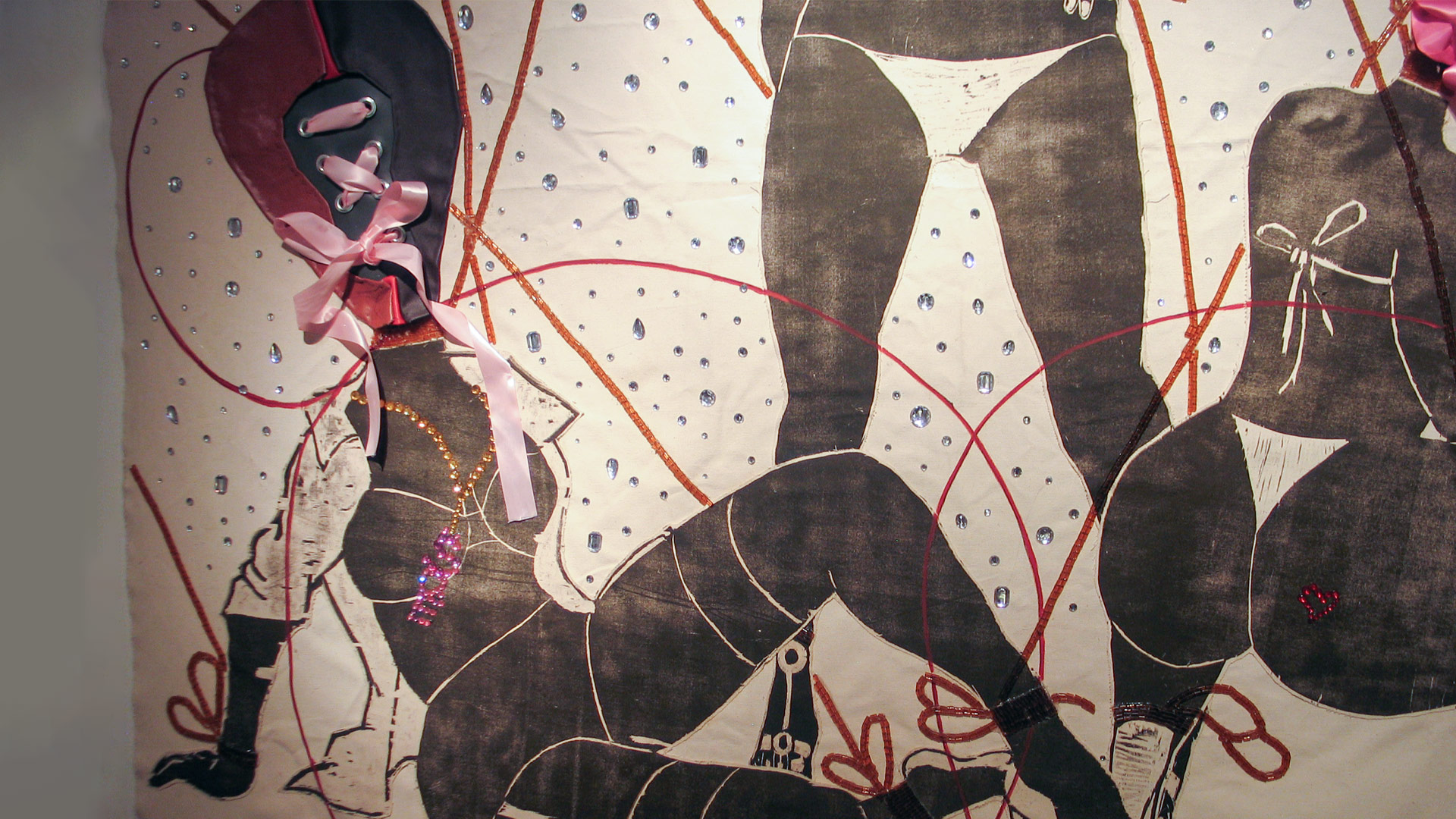
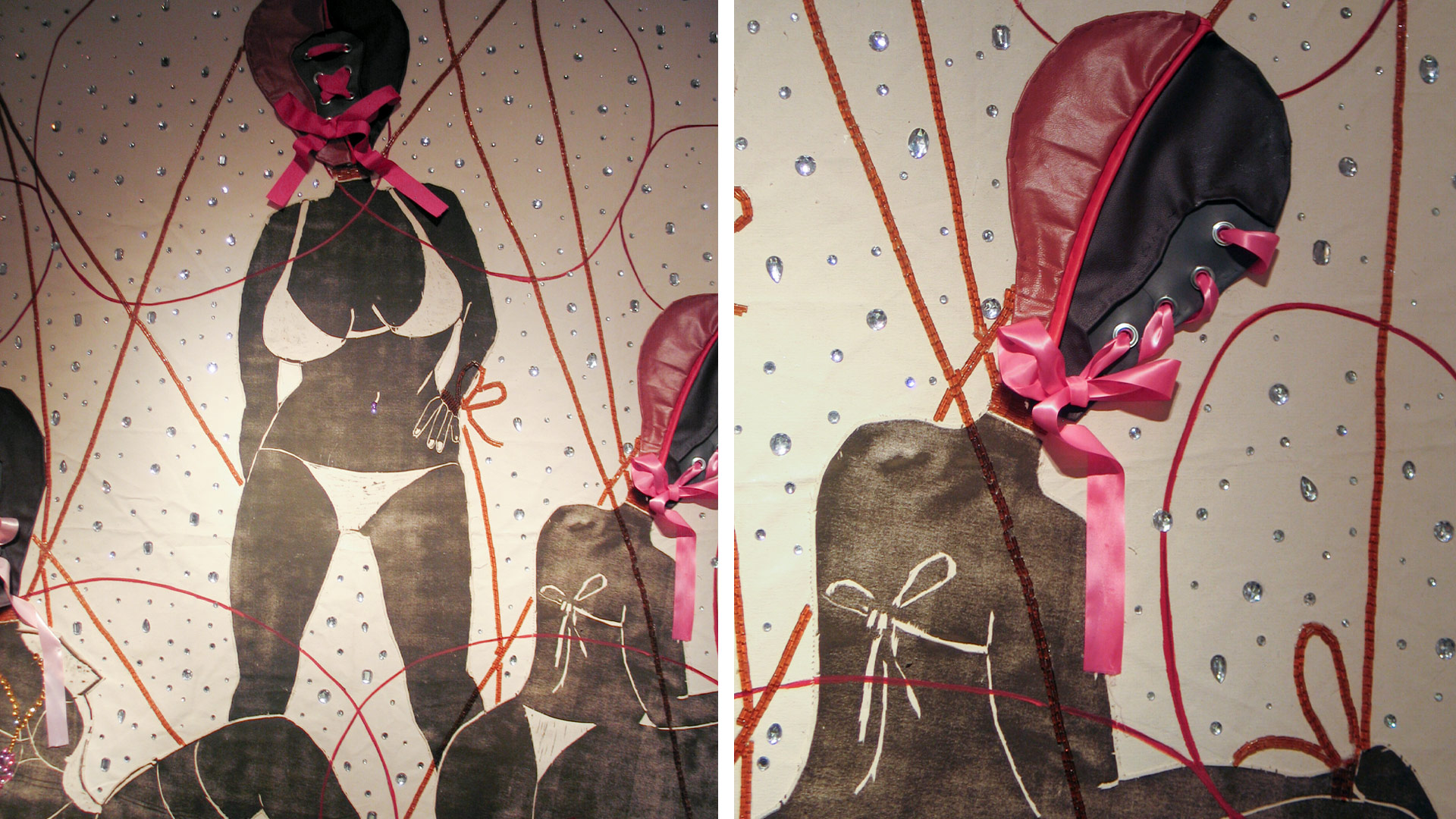
International Projects, Site Specific
Moving Targets [Bs As]
John Hitchcock
29.02.08
Objetivos Móviles/Moving Targets-Buenos Aires was a co-curatorial project co-organized by the artist John Hitchcock (Director of the Printmaking Department and Associate Professor at the University of Wisconsin-Madison, USA) and the artist Alicia Candiani (Projecto´ace Director) framed in the residence that Hitchcock made with us from February 15th to March the 6th, 2008.
With the institutional support of the Ministry of Culture of the Municipality of Buenos Aires and Metrovías company partnership, Objetivos Móviles/Moving Targets-Buenos Aires results in an urban artistic action involving Colegiales neighborhood and displayed on the Metrovias Trains System in Argentina on Friday February 29, 2008 (a unique day in a leap-year!). The print action took place between the Federico Lacroze Station in the City of Buenos Aires and Fernández Moreno Station in Buenos Aires Province of the railroad Gral. Urquiza. These two stations united Proyecto’ace in Colegiales, Buenos Aires City and Centro de Edición. Directed by Natalia Giachetta, this is a litho workshop and gallery located in Saénz Peña, Buenos Aires Province. A group of 25 Argentine artists lead by John Hitchcock and Alicia Candiani, carried large banner prints through the train cart system. Each banner had several images of North America, South America and Caribbean artists’ works. 50 young up and coming artists (25 from South America and 25 from North America) and 50 established artists were invited to participate.
The banners, as large flags, were exhibited in two spaces in Argentina: the Proyecto’ace Studios and the platforms of the General Urquiza Train in front of Centro de Edición in Buenos Aires Province. Later they were exhibited in Pyramid Atlantic Art Center´s Main and Kunst Vault galleries from August 1 – October 3, 2009 in the United States.
ABOUT MOVING TARGETS INTERNATIONAL PROJECT
As a concept, Moving Targets involves presenting the print medium in a specific and meaningful way. It ties to the rich tradition that printmaking serves as a vehicle for expression of discontent and critique.
As an international print project reflecting social concerns moving via public transportation across borders, it aims to address on how public transport can become a means of cultural dissemination while emphasizing the historical tradition of graphics as a democratic vehicle for the communication of ideas.
The first action-exhibition was originally presented as Cultural Transport / Moving Target on a train between Berlin (Germany) and Poznan (Poland), co-organized by Keith Christensen and John Hitchcock within the framework of IMPACT IV in Germany. The title Moving Targets, expresses the difficulty in stopping something (shooting down–in military terms) that exists when trying to stop something or destroy it when it is in movement. The project uses trains, means of public transport, to disseminate cultural actions, thus the vehicle is literally the means of expression. Under the metaphor of what is in motion cannot be shot down, actions have been planned on the trains with printed works, also referring to the capacity of prints as agents that promotes reflection and change.
Emerging Argentine artists participating in the performatic action |Buenos Aires Daniela Karol, Magdalena Arnaud, Lucía Miranda, María Julieta Arnaut, Félix Torrez, Carolina Sosa, Josefina Zuain, Federico Signorelli, Juan Natch, Sofía Quirno, Fernanda Castelo, Valeria Zamparolo, Ignacio Luis Ravazzoli, Nicolás Monti, Isabel Gruppo | Córdoba Sergio David Alvarez, Gisele Rodriguez Polich, Maximiliano de los Ríos, Lucia Mendez, Ana Belen Saldias Lopez, Mariana Pavan, Iván Vianello, Micaela Damico Bossio | Santa Fé Javier Cazenave | Tucumán Martín De Negro.
Related artists
Objetivos Móviles / Moving Targets
A John Hitchcock´s original project
Co-organized and co-curated by Alicia Candiani
in partnership with Centro de Edición Taller Galería
Director Natalia Giachetta
Selected and invited artists
NORTH AMERICA | Kim Ambriz, Plinio Avila, Michael Barnes, Marwin Begaye, Lisa Bulawsky, Keith Christensen, Justin Diggle, Timothy Dooley, David DuBose, Wanda Ewing, Bill Fick, Jill Fitterer, Ruthann Godollei, John Hancock, Dusty Herbig, Mike Houston, Hybrid Press/202c (Hitchcock & Busich), Drew Iwaniw, Anita Jung, Angela Lopez, John Lysak, Barb Madsen, Justin Maes, Nichole Maury, Phyllis McGibbon, Dylan McManus, Dennis McNett, Anna Moisiadis, Traci Molloy, Ayanah Moor, Johanna Mueller, Ashley Nason, Meghan O´Connor, Nancy Palmeri, Miguel A. Pena, David Raine, Curt Readel, Kathryn J Reeves, Derrick Riley, Jason Ruhl and Amy Newell, Humberto Saenz, Jenny Schmid, Neal Ambrose-Smith, Satan’s Camero, David & Kassie Teng, Daryl Vocat, Heather White, Aaron Wilson, Melanie Yazzie, Imin Yeh.
SOUTH AMERICA AND THE CARIBBEAN | Sergio David Alvarez, Magdalena Arnaud, María Julieta Arnaut, Romina Biglieri, Silvana Blasbalg, Sergio Blatto, María Bonomi, Silvia Brewda, Juan Canavesi, Alicia Candiani, Rimer Cardillo, Fernanda Castelo, Hugo Cava, Javier Cazenave, Mariela Constant, Micaela D´amico Bossio, Maximiliano De los Ríos, Martín De Negro, Sebastián García Huidobro, Isabel Gruppo, Daniela Karol, Ana María McCarthy, Lucía Mendez, Patricia Miani, Ricardo Migliorisi, Lucía Miranda, Nicolás Monti, Adriana Moracci, Juan Natch, Mari Mater O´Neil, Néstor Otero, Mariana Pavan, Sofía Quirno, Ángel Ramírez, Ignacio Luis Ravazzoli, Rafael Rivera Rosa, Gisele Rodriquez Polich, Ana Belén Saldías López, María Mercedes Salgado, Carolina Salinas, Garvin Sierra, Federico Signorelli, Carolina Sosa, Félix Torrez, Rafael Trelles, Julio Valdez, Ivan Vianello, Patricia Villalobos Echeverría, Valeria Zamparolo, Josefina Zuain.
